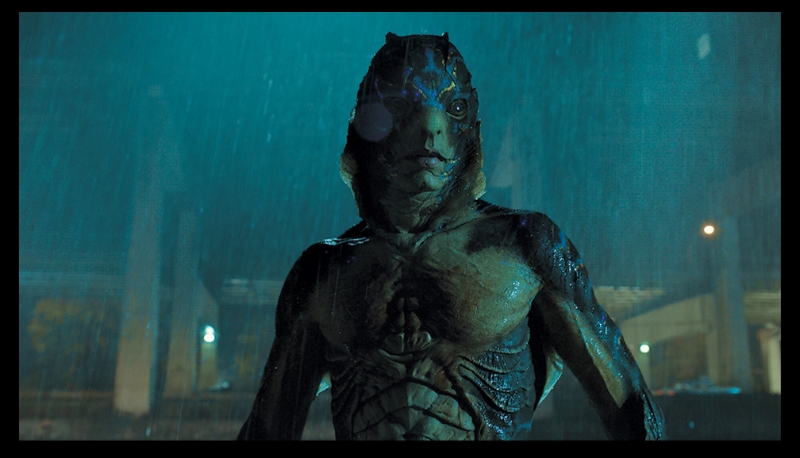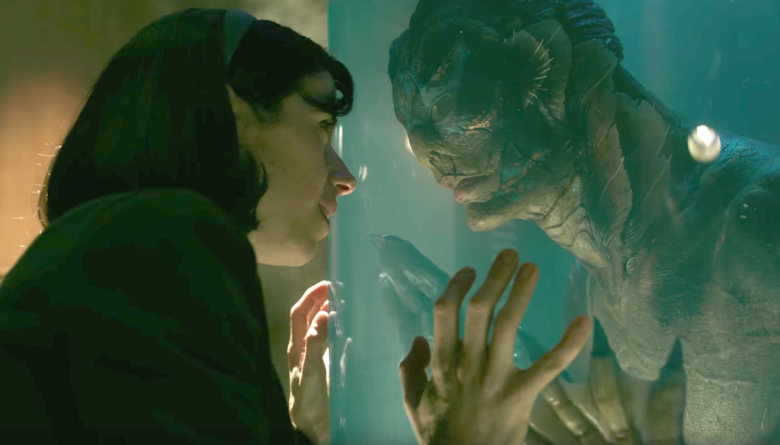The Shape of Water has been a huge hit in so many regards. A beautifully articulated and portrayed story of bizarre, forbidden romance wrapped in the trappings of a creature feature, it’s no surprise that the film has received so much acclaim. But every flicker of fame comes with just as much controversy and Guillermo del Toro’s latest masterpiece is no different. With accusations of theft from a 1969 play, Let Me Hear You Whisper, this tale of aquatic romance and intrigue has played out into a larger, more dramatic tale.
The accusation against del Toro and The Shape of Water is simple: plagiarism. The film is accused of stealing key elements of character and story from playwright and children’s author Paul Zindel’s Let Me Hear You Whisper. After reading so many of the claims and actually doing a bit of research, myself, there are some striking similarities. But before we get into that, let’s do an overall assessment of both films.
In Let Me Hear You Whisper, a socially awkward cleaning lady is hired by a laboratory to keep the place clean. She is instructed not to touch the equipment or animals being experimented on and is constantly under the scrutiny of a middle manager, while also catching the eye of an equally socially inept maintenance man. Meanwhile, scientists trying to make a dolphin speak prepare to examine the animal’s brain when it fails to talk to them. The woman, enamored by the animal, comes up with a plan to try and release it into the wild, but before she can, it begins to speak to her and only her. Eventually, she leaves the lab, much to the protest of everyone, human and dolphin alike, and the story ends.
Meanwhile, The Shape of Water tells the story of a shy, mute girl who is hired to clean a secret government lab during the Cold War, where experiments are being done on a South American gil man/amphibian-deity creature. The girl is befriended by a nosy, loud-mouthed coworker and an older male neighbor, who help her free the gil creature before he can be vivisected. A story of sexual exploration, forbidden romance, wonder and intrigue with Soviet and American operatives trying to claim the creature all unfolds into a bizarrely satisfying fairy tale ending.
The most immediate similarity, of course, is the love between janitor and sea life. In Let Me Hear You Whisper, this love is expressed as a genuine concern for an otherwise helpless creature by a compassionate, ostracized woman. In The Shape of Water, our outcast falls into a nurturing, romantic love for the creature, which leads to several amazing but awkward moments. There are scientists bickering about cutting open the innocent, misunderstood creatures in both films and a very specific style in architecture and decor within both stories. Still, the most obvious similarity between the two tales is the relationship that blossoms between two very different intelligences.
Guillermo del Toro denies any purposeful copying of the play, while Zindel’s estate contests that it is a direct ripoff of the playwright’s story.
I’ve watched both. Here’s my take on this.
There are unmistakable similarities between The Shape of Water and Let Me Hear You Whisper, with their primary theme being socially uncommon companionships between aquatic creatures and awkward women. Where del Toro’s story has all of the elements of a fairy tale, Zindel’s play is much more dry and grounded. The era, itself, is iconic: The middle of the Cold War, when paranoia and secret projects were perpetually being developed to undermine communist and capitalist ideologies. Almost 30 years after the collapse of the Soviet Union and the end of the Cold War, old hostilities are still a very real, palpable sensation, right now, and the memory of that bygone time elicits a certain response from audiences of all ages. Finally, the style of the ’60s is still as iconic and memorable today as it was then and, setting a story in that plastic-fantastic, pastel and shag carpet world is visually appealing.
There are unmistakable coincidences in character and story between Let Me Hear You Whisper and The Shape of Water. But these similarities are only skin deep. The former is a story of a shy, reclusive woman coming out of her shell to uphold a moral purpose. The latter is of a strangely ostracized woman finding love and her true nature in the fantastic. You can find recordings of Zindel’s Let Me Hear You Whisper on YouTube and other streaming services, while The Shape of Water is still playing in select theaters. Watch both and decide for yourself.
*Author’s Note: Let Me Hear You Whisper seems to have been so universally forgotten until this controversy that the only stills I could find for this article had to be screenshot from the bootlegged video of the play available on YouTube.



